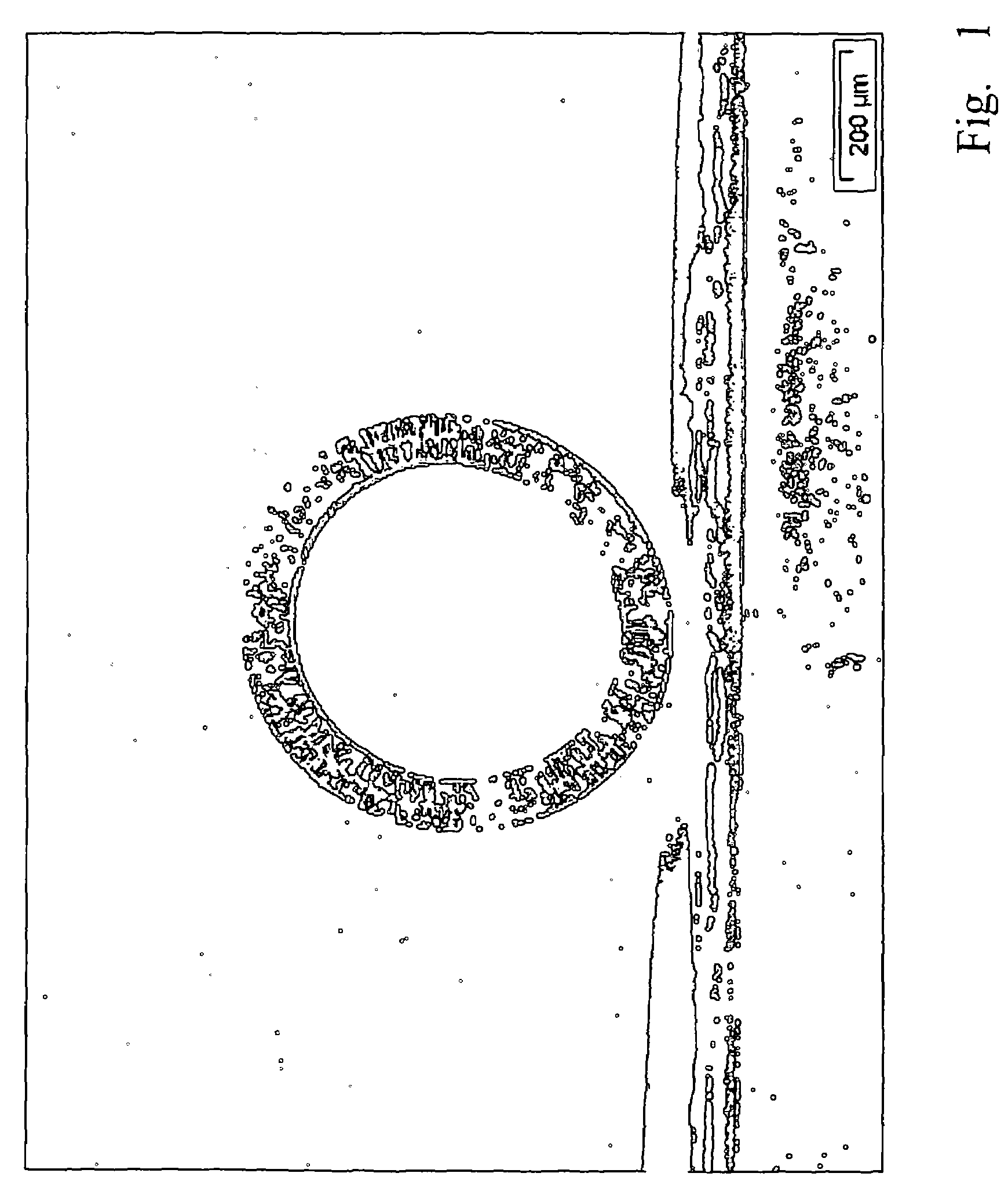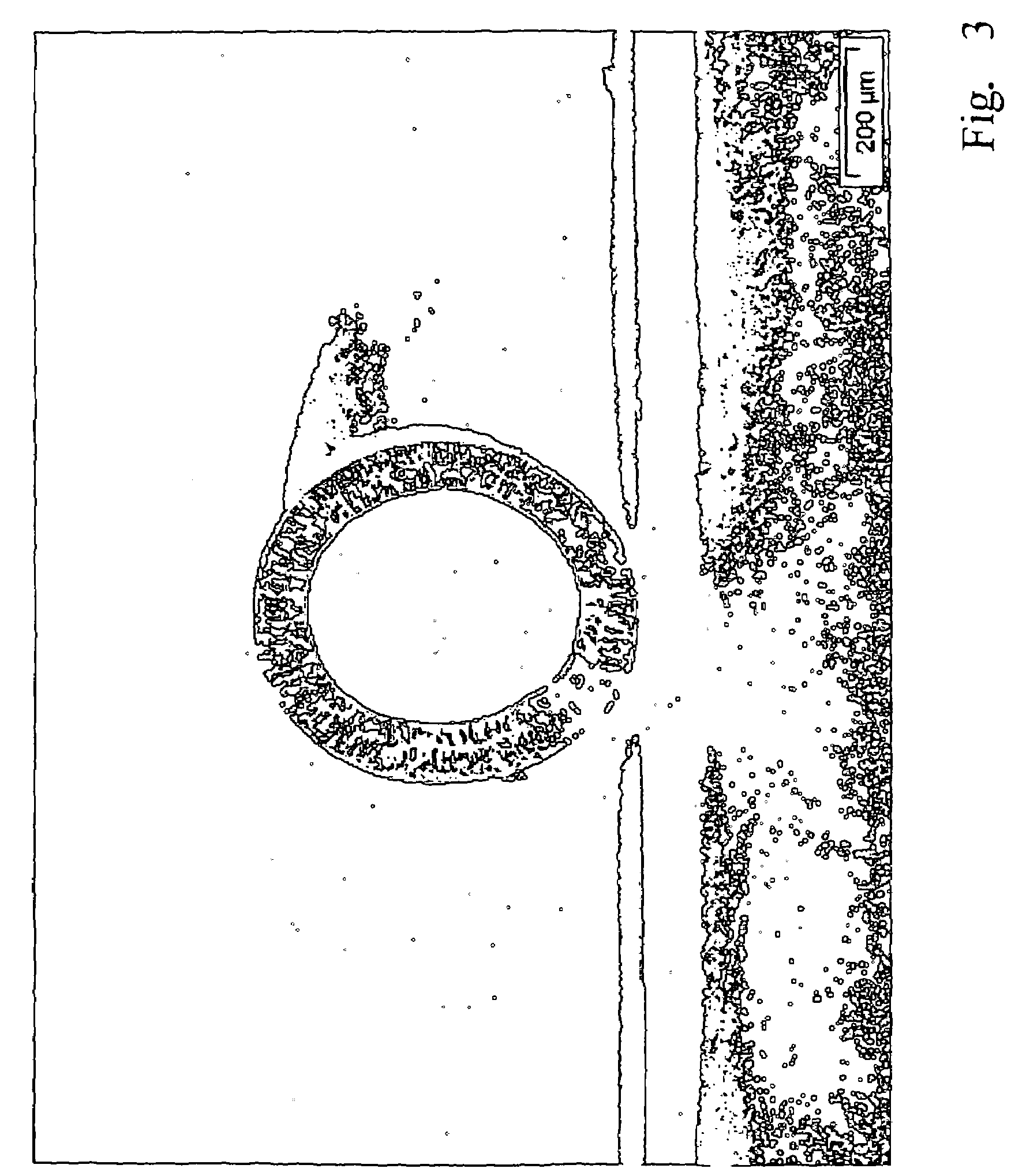Double-layer hollow membrane for bio-reactor applications
a bioreactor and hollow membrane technology, applied in the field of membranes with double-layer hollow membranes, can solve the problems of insufficient membrane formation in accordance with a phase inversion process, non-swelling or moderately swelling membranes do not have optimal properties in blood or tissue compatibility, and can not be used for many, etc., to achieve the effect of low cos
- Summary
- Abstract
- Description
- Claims
- Application Information
AI Technical Summary
Benefits of technology
Problems solved by technology
Method used
Image
Examples
example 1
[0045]A polymer consisting of 8 parts PAN, 8 parts ANNVP 5-copolymer and 84 parts N,N-diemthylformamide (DMF) was prepared by dissolving the polymers and stirring for 2 hrs at 80° C., wherein, in a first stage, the PAN was dissolved in the solvent and the appropriate amount of AN-copolymer was added. After cooling, this polymer solution was filtered, degasified using a filter combination consisting of polyester separator (Sartorius) / fleece (Carl Freudenberg) and was then used as polymer mixture solution for the outer membrane layer of the double layer membrane. In the same way, a solution consisting of 8 parts PAN, 9 parts ANNVP 20-copolymer and 84 parts DMF was made, prepared and used as polymer mixture solution for the inner polymer layer. As lumen filler and as coagulation bath water was used. The polymer mixture solutions were combined using a multi-channel hollow core nozzle with the dimensions 190 μm / 360 μm / 560 μm / 760 μm / (narrow pin diameter) inner slot diameter / diameter of th...
example 2
[0049]As in the Example 1 a double layer hollow membrane was prepared with the difference that it was thermally stabilized at 30° C.
[0050]The morphology of this double layer hollow membrane is shown in FIG. 3 and a highly enlarged picture of the interface layer between the two polymer layers of this membrane is presented in FIG. 4.
[0051]A double layer hollow membrane in the context of the present invention was formed with a structural integrity over the membrane cross-section consisting of a blood-compatible inner layer and a tissue-compatible outer layer. In FIG. 4, the interface layer between the two layers is indicated. The structural integrity of the cross-section is so ideal that the presence of the interface layer can be assumed in the lower part of FIG. 4 only from little changes in the morphology. The total structure however shows clearly the structure of the double layer hollow fiber membrane consisting of two polymer layers. The ratio of the two layer thicknesses is about ...
example 3
[0054]A double layer hollow membrane was prepared like in example 2 with the difference that the polymer solution which, in the double layer hollow membrane, forms the inner membrane consisted of 16 parts ANAPMA and 84 parts of DMF.
[0055]The morphology of this double layer hollow membrane is shown in FIG. 5 and that of the interface area between the two polymer layers of this double layer- hollow membrane is represented in FIG. 6.
[0056]A double layer hollow membrane was formed in accordance with the invention with an amino group-containing inner layer, which can be functionalized with heparin so as to be well blood compatible and with a tissue compatible outer layer. FIG. 5 shows the high structural integrity between the two polymer layers. In FIG. 6, the interface between the two polymer layers can be clearly identified by clearly differentiated structural distinctions. Again a practically ideal structural integrity of the two polymer layers of the membrane cross-section is obtaine...
PUM
| Property | Measurement | Unit |
|---|---|---|
| speed | aaaaa | aaaaa |
| concentration | aaaaa | aaaaa |
| mass content | aaaaa | aaaaa |
Abstract
Description
Claims
Application Information
 Login to View More
Login to View More - R&D
- Intellectual Property
- Life Sciences
- Materials
- Tech Scout
- Unparalleled Data Quality
- Higher Quality Content
- 60% Fewer Hallucinations
Browse by: Latest US Patents, China's latest patents, Technical Efficacy Thesaurus, Application Domain, Technology Topic, Popular Technical Reports.
© 2025 PatSnap. All rights reserved.Legal|Privacy policy|Modern Slavery Act Transparency Statement|Sitemap|About US| Contact US: help@patsnap.com



